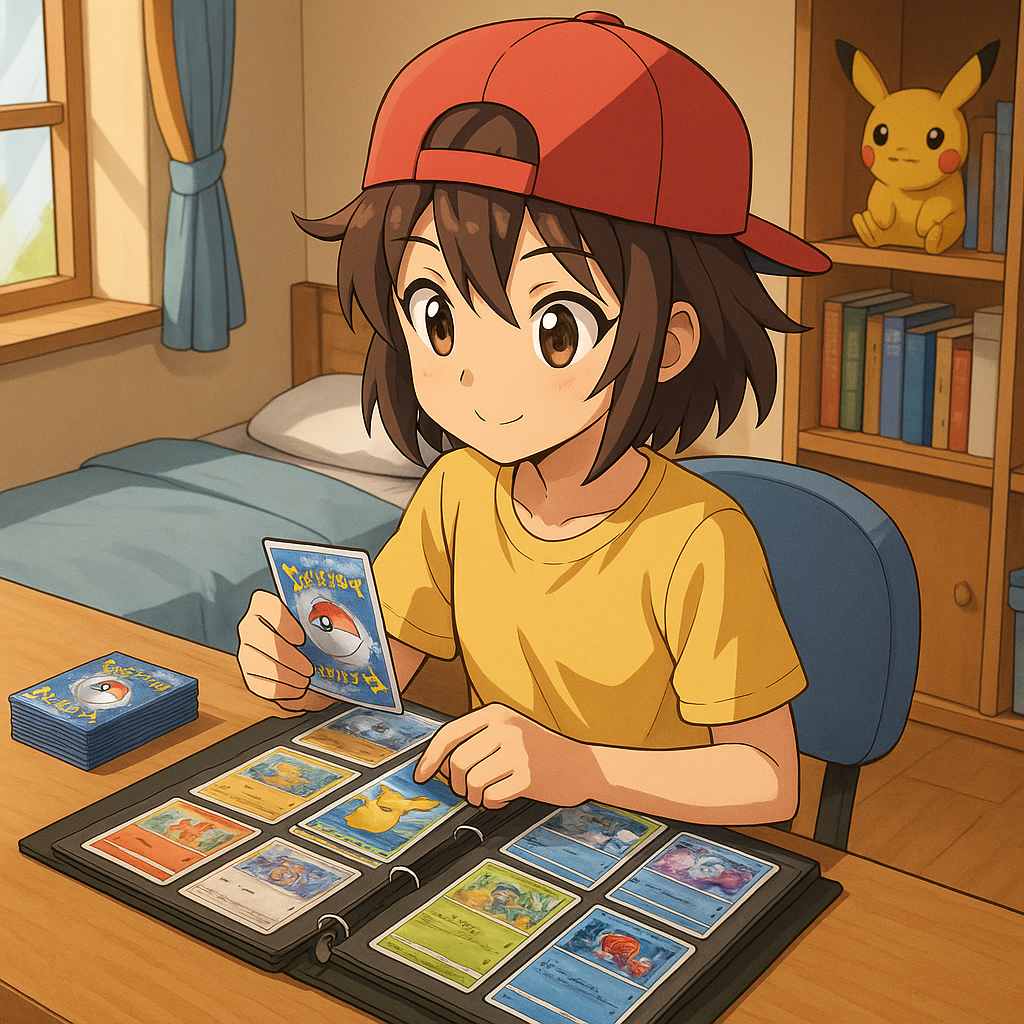Seven collector-tested systems on how to organise your Pokémon cards—by set, number, type, rarity, Pokémon, and artist—plus storage tips, checklists, and how I personally organise my own collection.
Whether you’ve got a shoebox of bulk or a wall of binders, the “right” way to organise Pokémon cards depends on your goals—display, trading, set-building, or deck-building. Below are seven proven systems collectors use, with quick steps and pros/cons. At the end, I’ll show you exactly how I organise my own binders.
New to collecting? Start with our Beginner’s Guide to Starting a TCG Collection and keep our Card Show Checklist handy for event days.
1) Sort by Set (the classic)
Why: Ideal for building “master sets” and tracking progress.
How: Use the set symbol next to the card number to group cards, then place them into pages by collector number (e.g., 36/114). Reserve the final page(s) for secret rares that exceed the set maximum.
- Pros: Perfect for checklists and trading clarity.
- Cons: Requires re-sorting as new cards arrive; older sets can span multiple binders.
2) Sort by Rarity (showcase your hits)
Why: Great for a “hits” binder—your Full Arts, Illustration Rares, and ultra-rares all in one place.
How: Order pages from commons up to the highest rarities, or group by rarity family (e.g., Illustration Rares together).
- Pros: Fast, fun browsing; instant wow-factor.
- Cons: Not designed for set completion.
3) Sort by Type (deck-builder friendly)
Why: Pull cards quickly for builds and keep themes visually consistent.
How: Make stacks or binder sections for Grass, Fire, Water, Lightning, Psychic, Fighting, Darkness, Metal, Colorless, Dragon (and Fairy in older eras). Inside each type, still file by set number so new additions slot in neatly.
4) Sort by Pokémon Name or Collector Number
Why: Alphabetical is simple for kids or small collections. Strict collector-number order is ultra tidy for binders or storage boxes.
How: Pick A–Z by species name, or go purely by the card’s printed collector number.
5) Sort by Artist (for art-focused collectors)
Why: The TCG’s art is a universe of its own. Curate binders around favourite illustrators.
How: Look for the illustrator credit at the bottom-left of the card. Dedicate a tab or a whole binder per artist.
6) Hybrid Systems (real-world mixes)
Most collectors blend methods. A common setup:
- Set → Number for master-set binders,
- a separate “Hits by Rarity” binder, and
- a Type-sorted box for duplicates and deck parts.
7) Protection & Storage: sleeves, binders, boxes
- Sleeve first: Penny sleeves or fitted inner sleeves prevent scuffs when paging cards.
- Side-loading, ringless binders: Reduce edge pressure; store upright on a stable shelf.
- Toploaders / magnetics: Use for singles you handle often or plan to trade; graded slabs for high-value cards.
- Boxes for bulk: Label by set, type, or “trade / duplicates”.
How I Personally Organise My Collection
Everyone’s priorities are different. Here’s exactly how I keep mine:
- Master Sets: Certain sets I’m actively completing live in their own dedicated binders, sorted by set → collector number with spaces left for missing cards and secret rares.
- Vintage Binder: All of my vintage era cards sit together in a single binder so I can enjoy the nostalgia in one place.
- Favourite Pokémon Binders: I keep character-themed binders because they make me happiest:
- Pikachu — Yellow binder
- Charizard — Red binder
- Blastoise & Gyarados — Blue binder
- Sentiment over value: Monetary value isn’t the priority for me—many of these are base cards—so I don’t use top-loader binders for my main collection.
- Trades on the go: I keep one top-loader folder specifically for show trades, so cards are protected while travelling and easy to flip through at tables.
This setup means my day-to-day binders are enjoyable to browse, while my trade stock stays protected and separate. If you collect for nostalgia first, it’s a great balance.
Quick Reference: Where to Find Info on the Card
- Set symbol: near the collector number at the bottom.
- Collector number: formatted like
36/114. - Rarity mark: ● common, ◆ uncommon, ★ rare; promos use a black star with “PROMO”.
- Illustrator: bottom-left credit (often “Illus.”).
- Type: energy type icon and colour (e.g., Fire, Water, Psychic).
Set-Building Checklist (printable layout)
- Sort pulls by set using the symbol.
- Inside the set, file strictly by collector number.
- Leave intentional gaps for missing numbers and secret rares.
- Sleeve and place into a side-loading, ringless binder.
- Track progress in a simple checklist (paper or spreadsheet).
Which System Should You Use?
If you love completing expansions, choose Set → Number. If you build decks, go Type. If you want a showcase, pick Rarity. And if art is your thing, embrace Artist binders.
The sweet spot for most collectors is a hybrid: one master-set binder, one hits binder, and a type-sorted box for dupes and playing pieces.
Want more collecting guides? Browse our Guides & How-Tos here


Leave a Reply